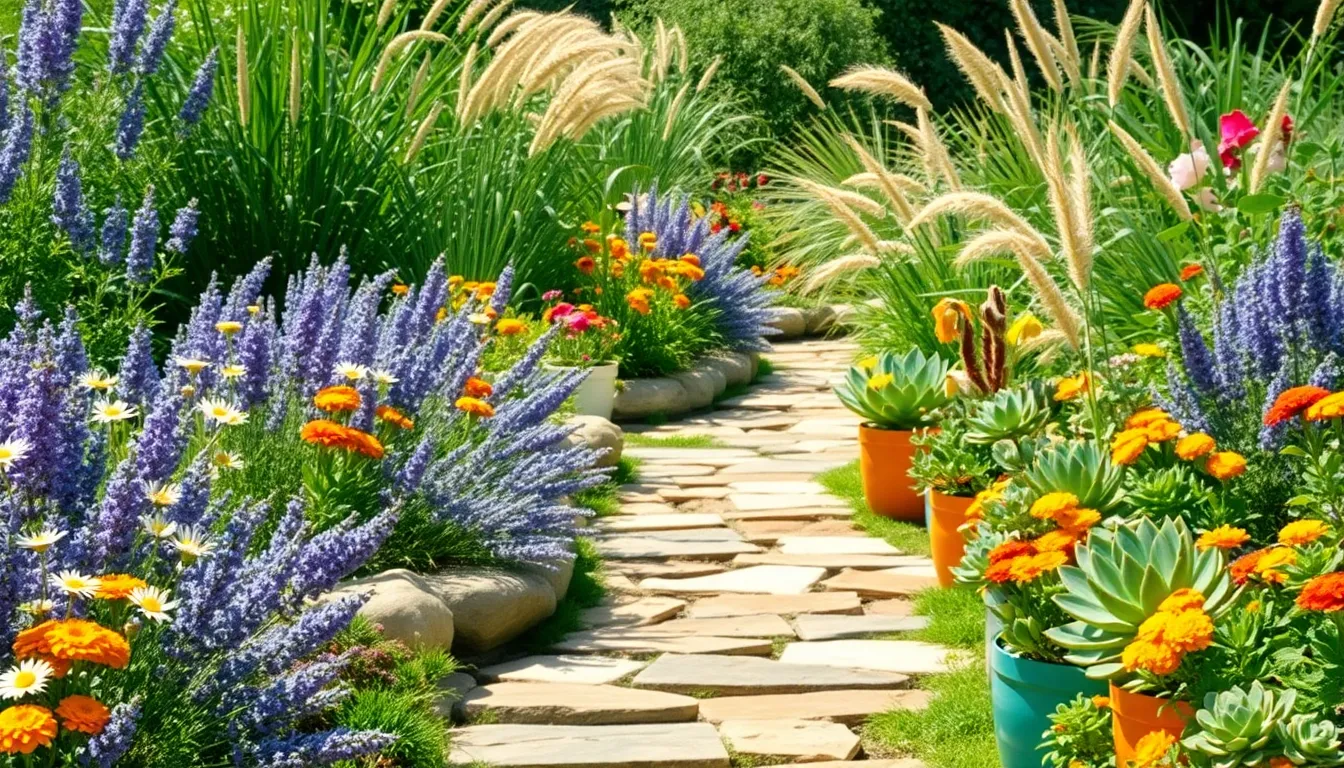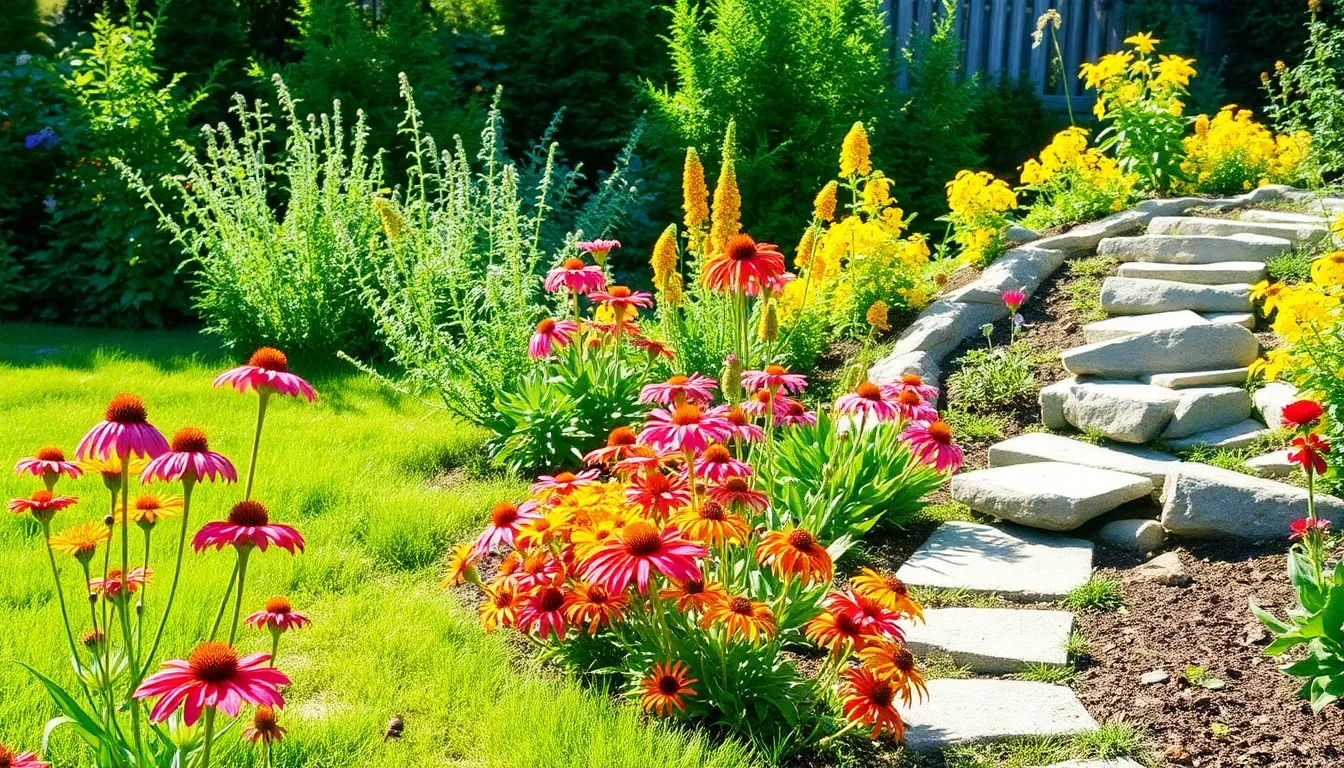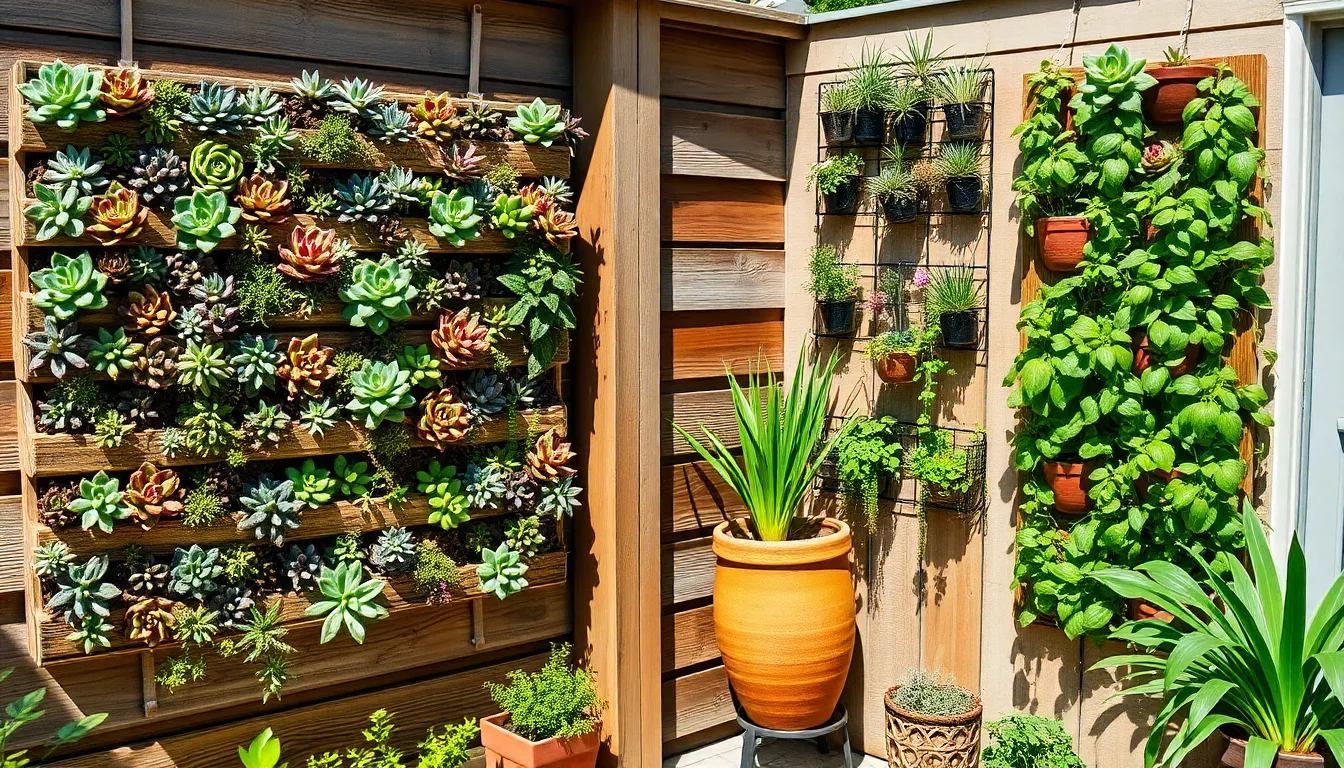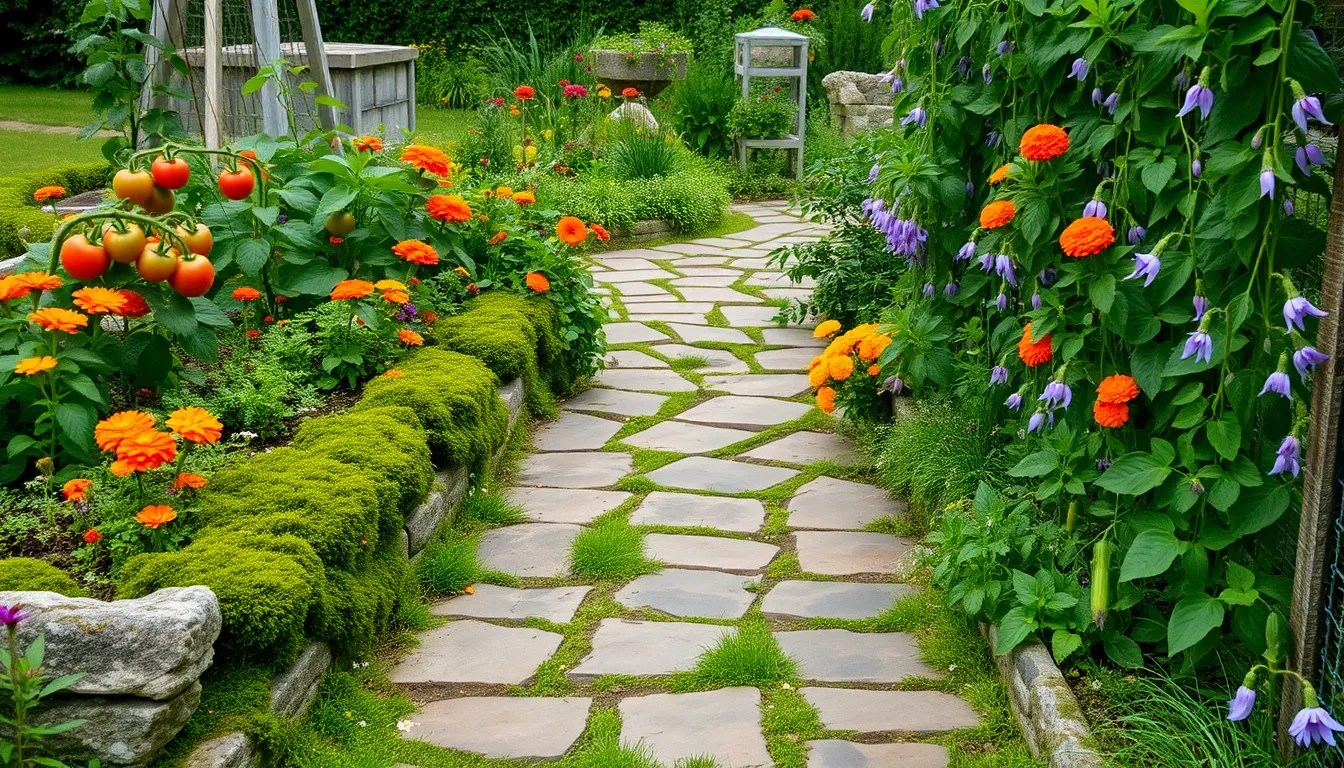Imagine stepping into your garden and being guided by a path that’s not just functional but a work of art in itself. Whether you’re nurturing your very first garden or have years of green-thumb experience, a thoughtfully designed pathway can transform your outdoor space into a welcoming oasis. Garden pathways are more than mere walkways; they are an invitation to explore, offering a sense of journey and discovery within your own backyard. A well-crafted path can enhance the beauty of your plants, highlight focal points, and tie together different sections of your garden in a harmonious flow.
For both the novice gardener eager to add charm and the seasoned landscaper looking to innovate, creative garden pathways offer endless possibilities. In this article, you will explore twelve inspiring pathway designs that range from rustic and natural to sleek and modern, each with its unique flair. We’ll delve into the versatile materials available, like stone, gravel, and wood, and discuss how they can be used to complement the rest of your garden. You’ll also discover practical tips for constructing these pathways, ensuring they are not only beautiful but durable and easy to maintain.
With these creative ideas, you’ll feel empowered to redefine the paths in your garden, making them a reflection of your personal style and the unique character of your home. Whether you wish to create a serene retreat or a vibrant promenade, these designs will guide you in crafting a pathway that delights both the eye and the soul. By the end of this article, you’ll be equipped with the inspiration and know-how to embark on a pathway project that transforms your garden into a masterpiece of design and functionality.
Charming Brick Pathway Ideas
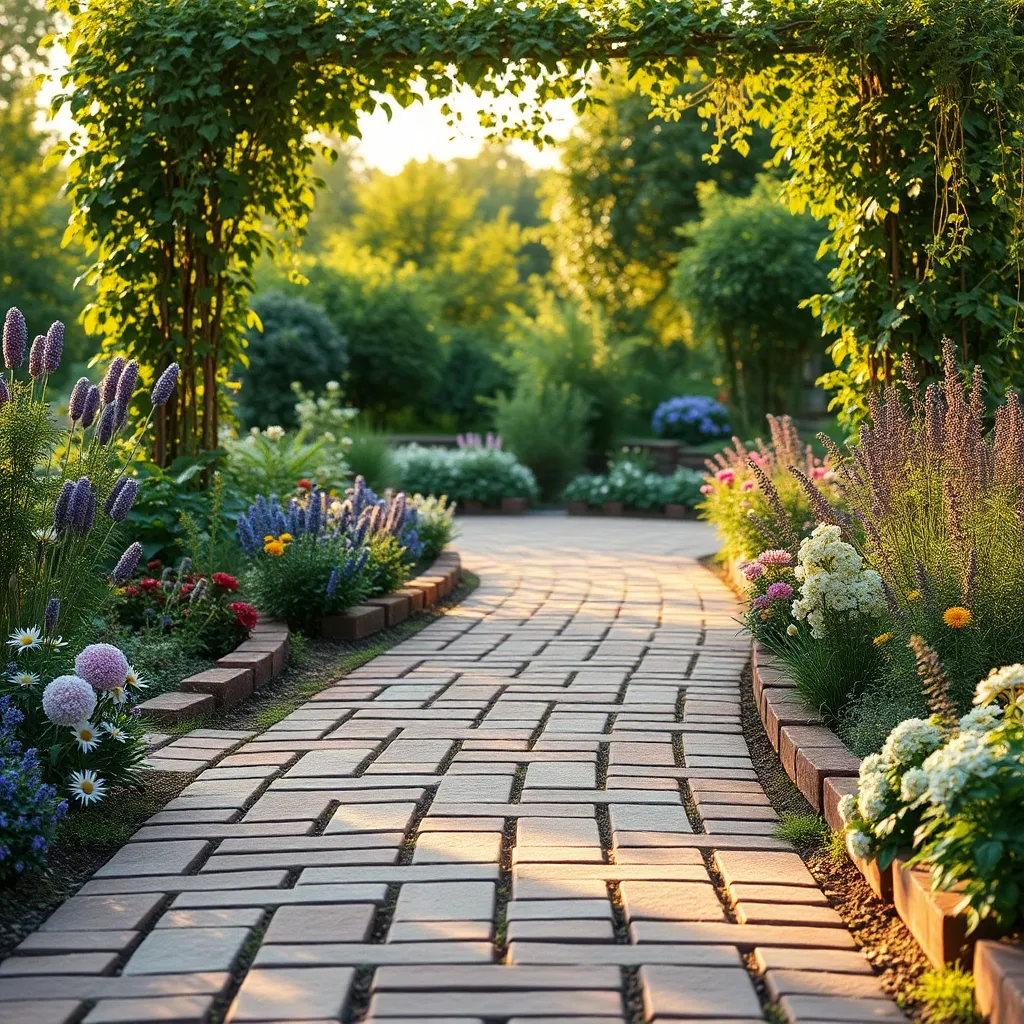
Creating a charming brick pathway in your garden not only adds a rustic aesthetic appeal but also serves as a practical guide through your landscape. Begin by selecting bricks that complement your garden’s color scheme and ensure they are suitable for outdoor use to withstand various weather conditions.
To lay a stable path, start by excavating the pathway area to a depth of about six inches, removing any roots or debris in the process. Fill the excavated area with a layer of gravel for drainage, followed by a layer of sand to cushion the bricks, ensuring a level surface.
When laying your bricks, consider using a herringbone or basket weave pattern for added visual interest. These patterns not only enhance the charm but also provide extra stability to the pathway, making it durable and long-lasting.
Regular maintenance will keep your brick pathway looking its best. Sweep the path frequently to remove leaves and dirt, and apply a sealant annually to protect the bricks from moisture and wear.
Natural Stone Walkway Designs
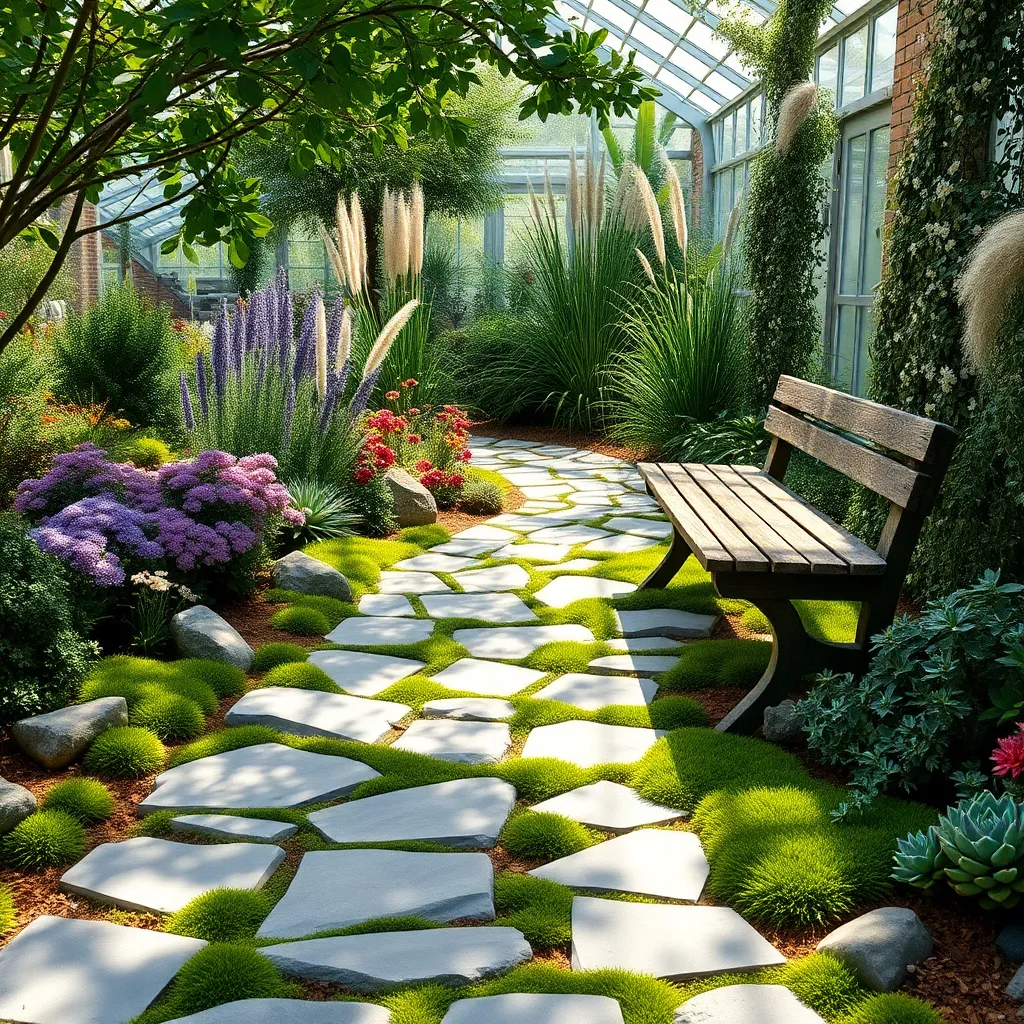
Incorporating natural stone walkways into your garden can create a stunning and organic look. Choose stones that complement the colors and textures of your garden’s existing elements to enhance the overall aesthetic.
When selecting stones, consider the climate and the types of plants surrounding the pathway. Stones like slate, limestone, and sandstone are durable and offer a variety of colors and textures that can suit different design styles.
To install a natural stone walkway, start by outlining the desired path with a garden hose or rope. Dig a shallow trench and fill it with a layer of compacted gravel to promote drainage and stability. Lay the stones with even spacing, ensuring they are flush with the surrounding soil to prevent tripping hazards.
Maintaining a natural stone pathway involves regular cleaning to prevent moss or algae buildup. Use a stiff brush and a mild detergent solution to scrub the stones, being cautious not to damage the surrounding plants. For a polished look, consider planting low-growing groundcovers like creeping thyme or moss between the stones, which add color and help suppress weeds.
Rustic Wooden Plank Paths
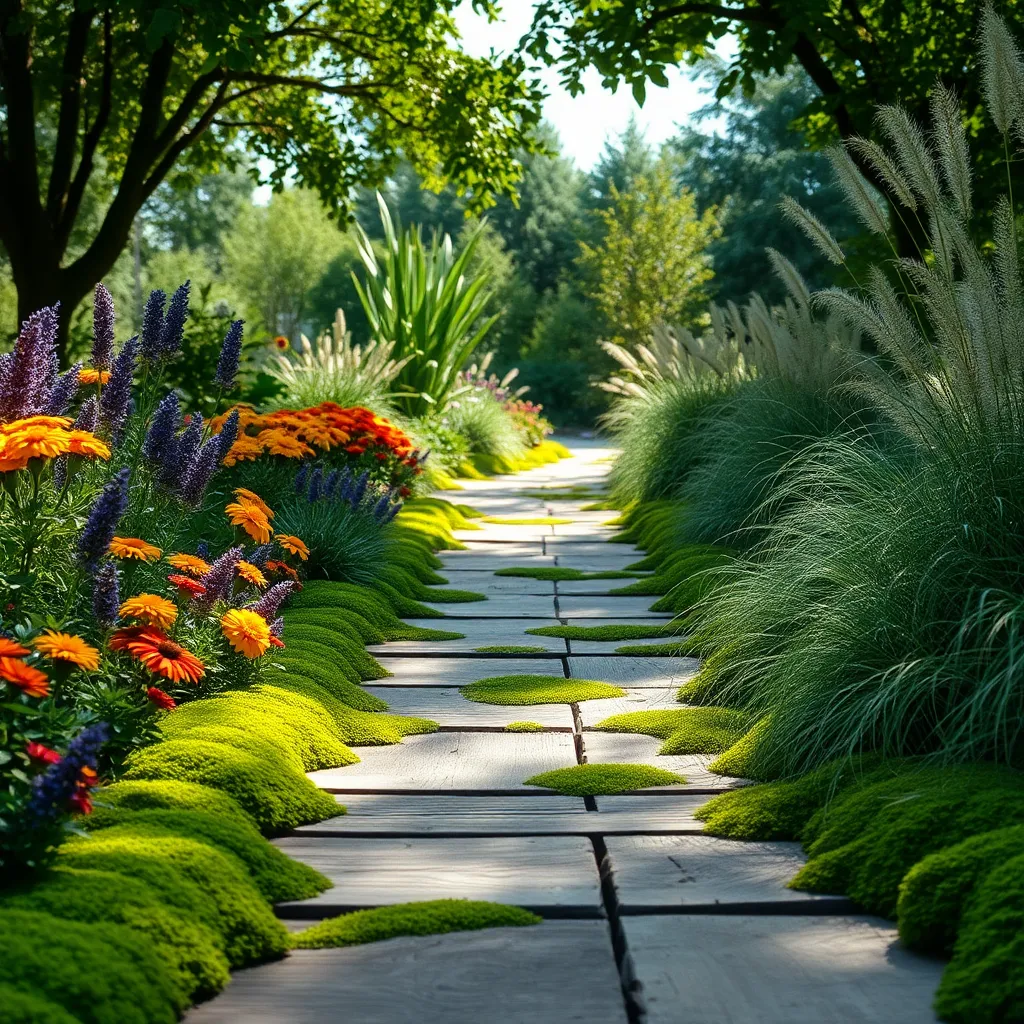
Transforming your garden into a rustic paradise, wooden plank paths offer a charming alternative to traditional stone walkways. They are not only visually appealing but also relatively easy to install, making them an excellent choice for DIY enthusiasts.
To create a durable path, choose hardwoods like cedar or redwood, which naturally resist decay and insects. Ensure your planks are treated for outdoor use to extend their lifespan, especially if your garden experiences heavy rainfall.
When installing the path, it’s crucial to level the ground beneath the planks. This can be achieved by laying a base of crushed gravel and compacting it to provide a stable foundation, reducing the risk of shifting or warping over time.
For added aesthetic appeal, consider planting low-growing ground covers, such as creeping thyme, between the planks. These plants not only enhance the rustic look but also help to suppress weeds and prevent soil erosion.
Modern Concrete Pathway Trends
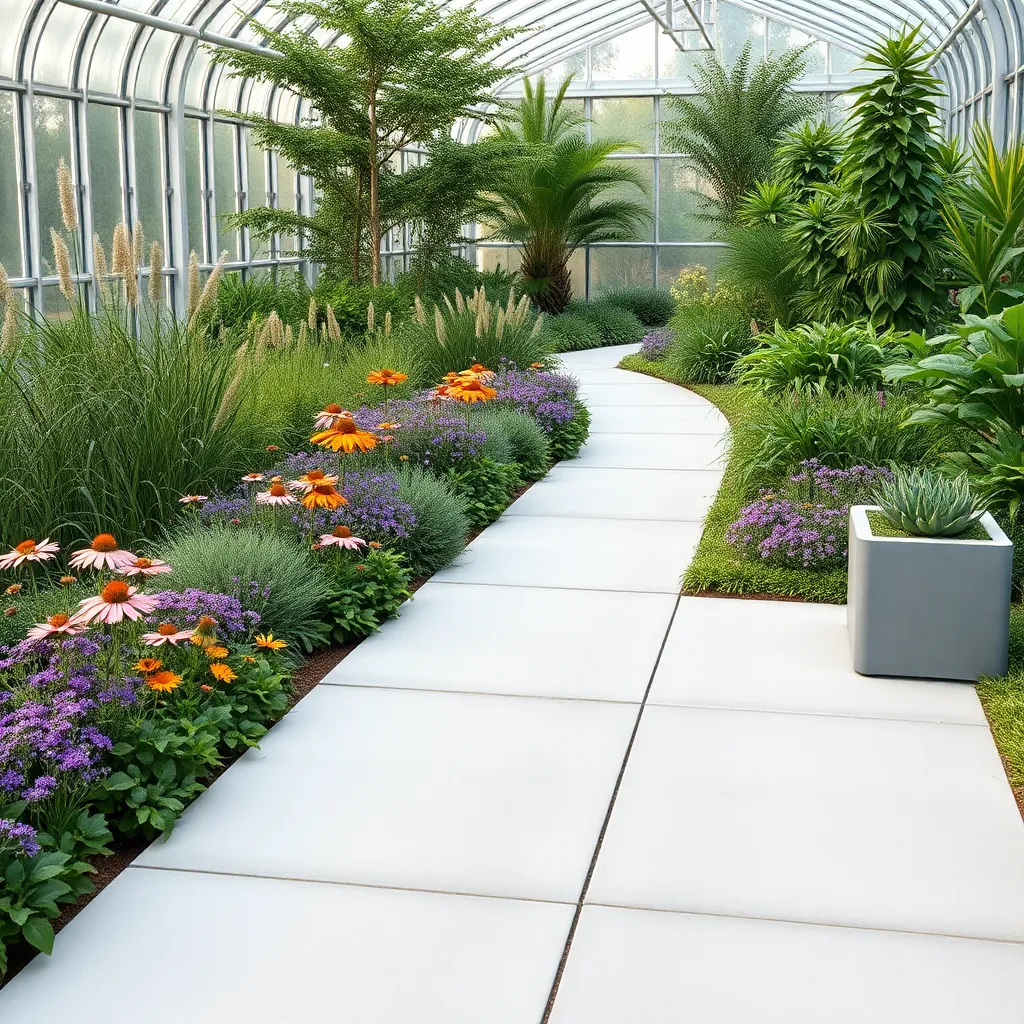
Modern concrete pathways offer a sleek and durable option for contemporary gardens. These paths can be customized with various textures and finishes to complement any garden style.
Incorporating concrete paths can help define garden spaces while providing a stable surface to walk on. To ensure longevity, it’s essential to use a concrete mix that is appropriate for your climate—consult with a local supplier for the best options.
To enhance visual interest, consider integrating decorative elements such as colored aggregates or stamped patterns into the concrete. This not only adds beauty but also provides traction, making the pathway safer during rainy conditions.
For gardeners looking to add greenery alongside these paths, opt for low-growing plants like creeping thyme or sedum. These plants thrive in well-drained soil and can handle light foot traffic, making them ideal for bordering concrete paths.
Advanced gardeners might experiment with embedding LED lights along the edges of their paths for nighttime illumination. These lights can be solar-powered, offering an energy-efficient way to highlight your garden’s beauty after dark.
Eco-Friendly Gravel Path Solutions

Eco-friendly gravel pathways offer a sustainable and visually appealing option for garden paths. They allow water to permeate through the surface, reducing runoff and promoting better drainage in your garden.
To create a gravel path, start by marking the desired path layout using stakes and string. Next, excavate the area to a depth of about 4 inches, ensuring the ground is level and compacted.
Lay a layer of landscape fabric to prevent weed growth, which can be a common challenge with gravel paths. Add a base layer of crushed stone, about 2 inches deep, to provide stability and aid drainage.
Top the base with your chosen gravel, ensuring it’s spread evenly across the path. Choose gravel with a diameter of 1/4 to 3/8 inches for a comfortable walking surface and to keep the stones in place.
For maintenance, regularly rake the gravel to keep it level and add fresh gravel as needed to maintain depth. This simple upkeep ensures your path remains functional and attractive over time.
Stepping Stone Arrangement Tips
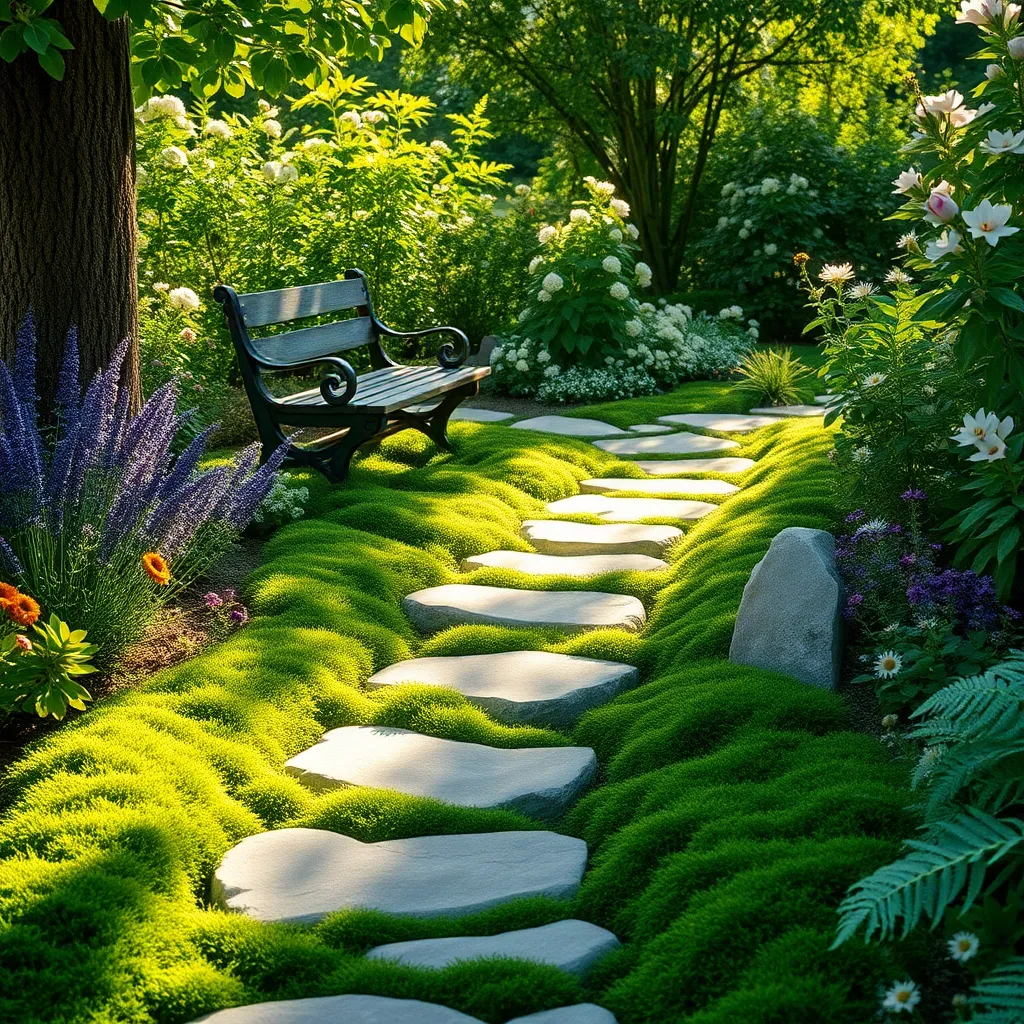
Stepping stones can transform a garden pathway into a beautiful and functional feature. Begin by choosing stones that are flat and sturdy, ensuring they can withstand foot traffic without shifting or breaking.
To create a seamless stepping stone path, lay out the stones in your desired pattern before digging. This allows you to adjust spacing and alignment, ensuring a natural and comfortable stride for those using the path.
For a secure placement, dig holes slightly larger than each stone and fill the base with a layer of sand. This provides a stable foundation and helps with drainage, preventing stones from sinking over time.
Incorporating plants between stepping stones can enhance the aesthetic and provide a soft contrast to the stones’ hard surfaces. Choose low-growing, hardy plants like Creeping Thyme or Irish Moss, which thrive in well-drained soil and can tolerate light foot traffic.
Water newly planted areas regularly to establish strong roots, especially during the first growing season. As the plants mature, they will require less frequent watering, making maintenance simpler and more sustainable.
Curved Pathways for Flow
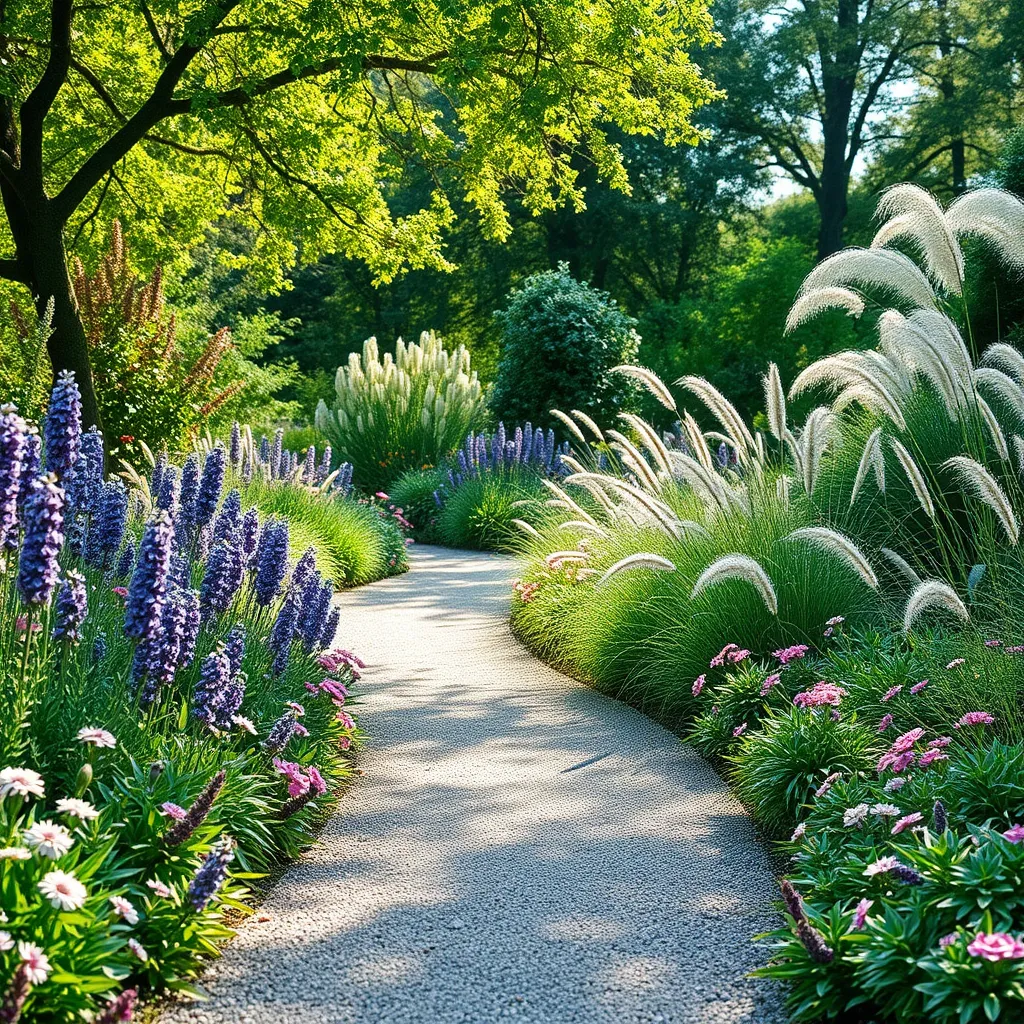
Curved pathways can transform your garden into a harmonious retreat, enhancing the aesthetic flow and guiding visitors gently through your landscape. These paths should be designed with a gentle arc, allowing for a more natural movement compared to straight lines.
To maintain a natural look, consider using materials like gravel, mulch, or natural stone, which can be easily adjusted to fit the curve. Gravel paths require a sturdy base of compacted soil or sand, while stone paths benefit from a layer of landscape fabric beneath to prevent weed growth.
Planting alongside these pathways adds an extra layer of beauty and functionality. Choose plants that thrive in your local climate, such as low-growing perennials like lavender or creeping thyme, which can soften the edges and provide fragrance as you pass by.
For a more dynamic effect, consider using plants with varied bloom times to ensure year-round interest. Advanced gardeners might layer different plant heights and textures, creating a living tapestry that changes with the seasons.
Mosaic Tile Pathway Inspirations
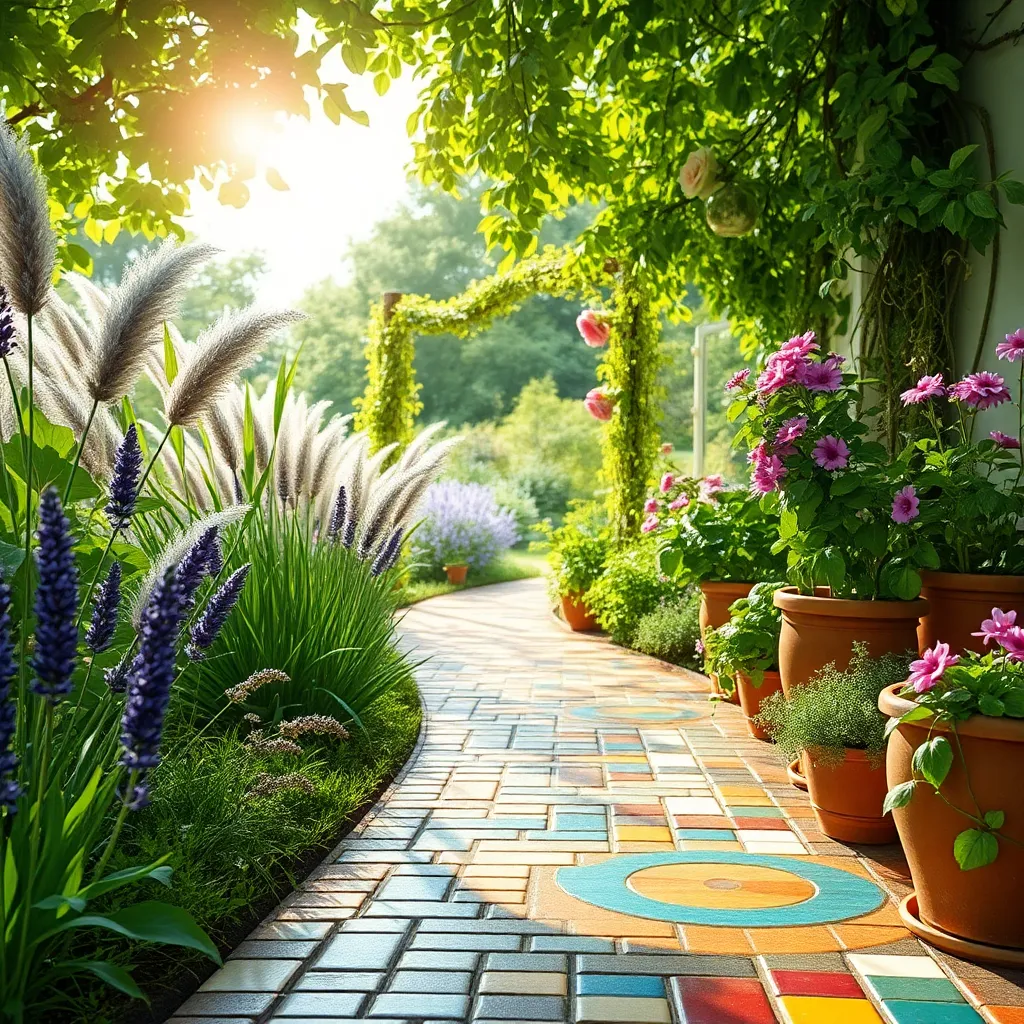
Mosaic tile pathways can transform your garden into a vibrant, artistic space. Start by selecting durable tiles that can withstand weather changes, such as ceramic or porcelain.
Consider the color palette and pattern to complement your garden’s theme. For a lush, tropical look, opt for tiles in greens and blues to mimic nature.
To lay the tiles, prepare a solid base of compacted gravel and sand. This foundation ensures stability and longevity, preventing tiles from shifting or breaking.
Once the tiles are in place, fill the gaps with polymeric sand to lock them together and deter weeds. Regularly sweep and hose down the path to maintain its pristine appearance.
For a unique touch, incorporate small mosaics of natural stones or pebbles. These additions can provide texture and contrast, enhancing the overall design.
Beginners should start with simple geometric patterns, gradually experimenting with more intricate designs. Advanced gardeners can explore custom mosaics, perhaps incorporating motifs from nature.
Incorporating Lighting in Pathways
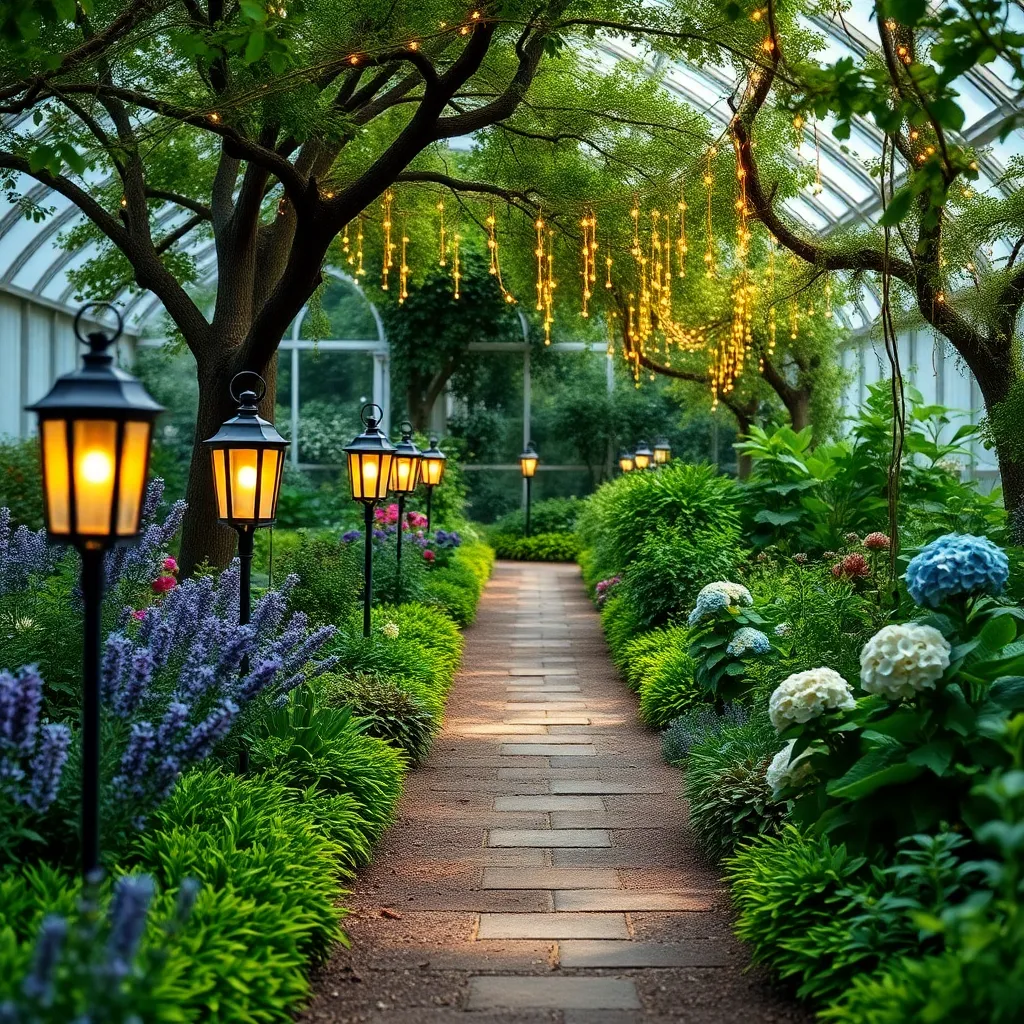
Integrating lighting into your pathways not only enhances safety but also accentuates the beauty of your garden at night. Choose solar-powered lights for an eco-friendly and low-maintenance option, which can be easily positioned along the path.
Low-voltage LED lights are another excellent choice, offering energy efficiency and a long lifespan. Consider placing these lights at varying heights to create depth and dimension, highlighting plants and pathway features.
To achieve a whimsical effect, mix different styles of pathway lighting, such as lanterns, stake lights, and recessed lighting. This approach adds personality to your garden while providing ample illumination for evening strolls.
For gardeners interested in advanced lighting techniques, using timers or smart lighting systems can offer automated control over your pathway lighting. This ensures that your garden is always well-lit during the desired hours, enhancing both security and aesthetic appeal.
Mixing Materials for Texture
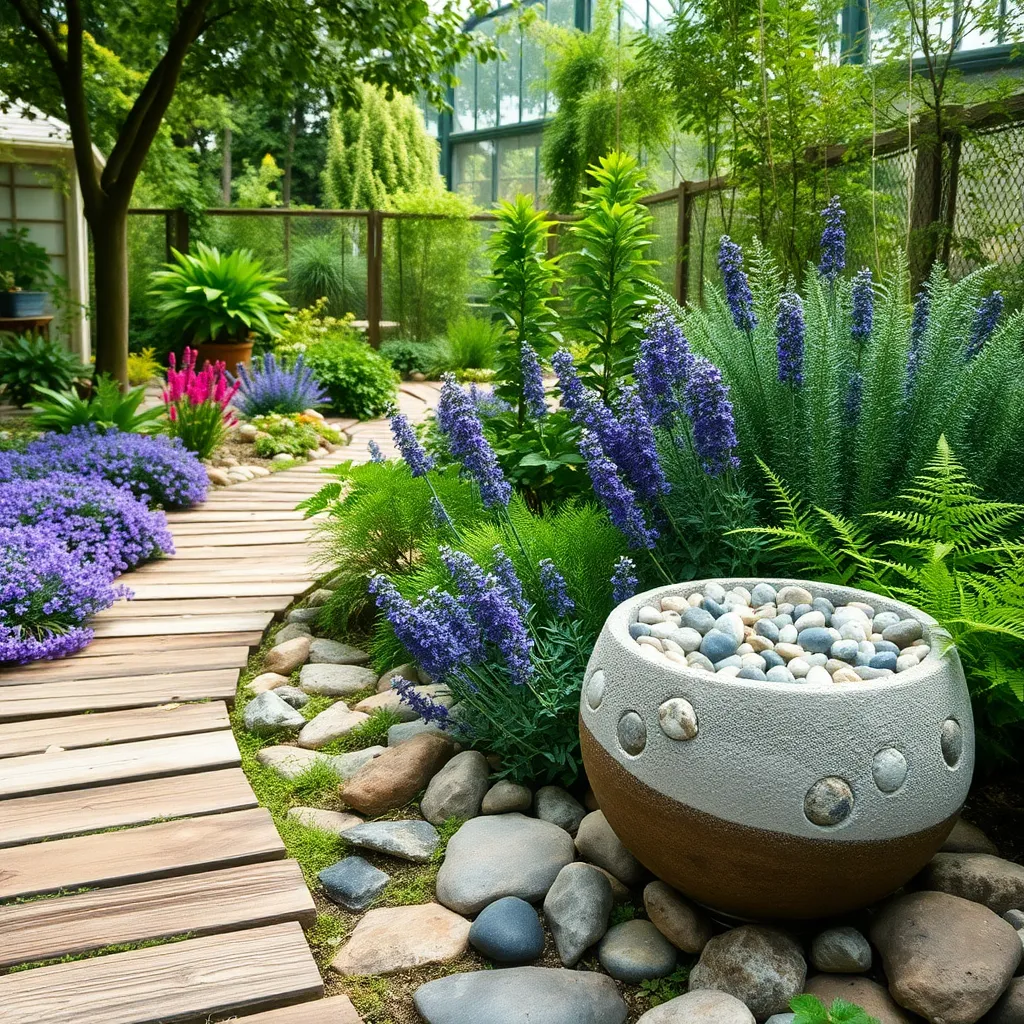
Creating a garden pathway with mixed materials adds both visual interest and tactile variety. Start by combining materials like gravel and stone, which offer distinct textures and colors to enhance your garden’s beauty.
Consider using contrasting colors and materials to define the pathway edges and create a cohesive look. For instance, pairing smooth river stones with crunchy pea gravel can make a visually appealing and functional path.
Think about the practical aspects of material selection, such as drainage and durability. Using permeable materials like gravel or crushed stone can help with water runoff, making them ideal for wetter climates.
For a dynamic path, incorporate mulch or bark alongside stepping stones, which can soften the look and provide a natural feel underfoot. This combination not only enhances the path’s aesthetic but also helps suppress weeds and retain soil moisture.
Pathways with Edging Accents
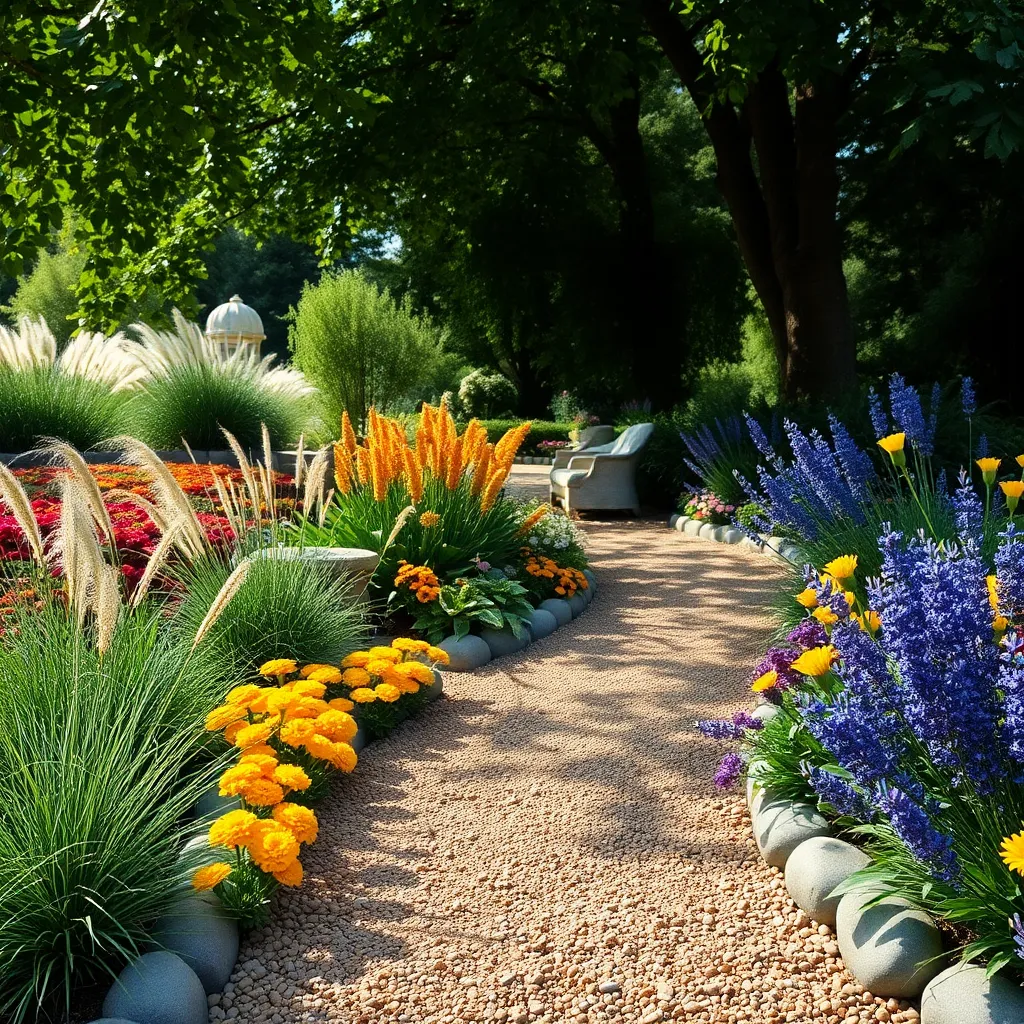
Pathways with edging accents not only add functionality to your garden but also enhance its overall aesthetic appeal. To create a visually appealing pathway, consider using materials like stone, brick, or wood for the edges, which can contrast beautifully with the pathway itself.
For beginners, start by selecting durable materials that can withstand weather changes, like concrete or recycled plastic. These options are low-maintenance and work well in various climates, ensuring your pathway stays intact throughout the seasons.
Advanced gardeners might opt for more intricate designs using natural stones or reclaimed bricks to give a rustic charm. Align these materials carefully to create a seamless and professional look, and consider using a mix of sizes to add texture and interest.
When installing your edging, make sure the ground is level and compact to prevent shifting over time. Regular maintenance such as checking for loose stones or bricks can help maintain the integrity and safety of your pathway.
Maintenance Tips for Long-Lasting Paths
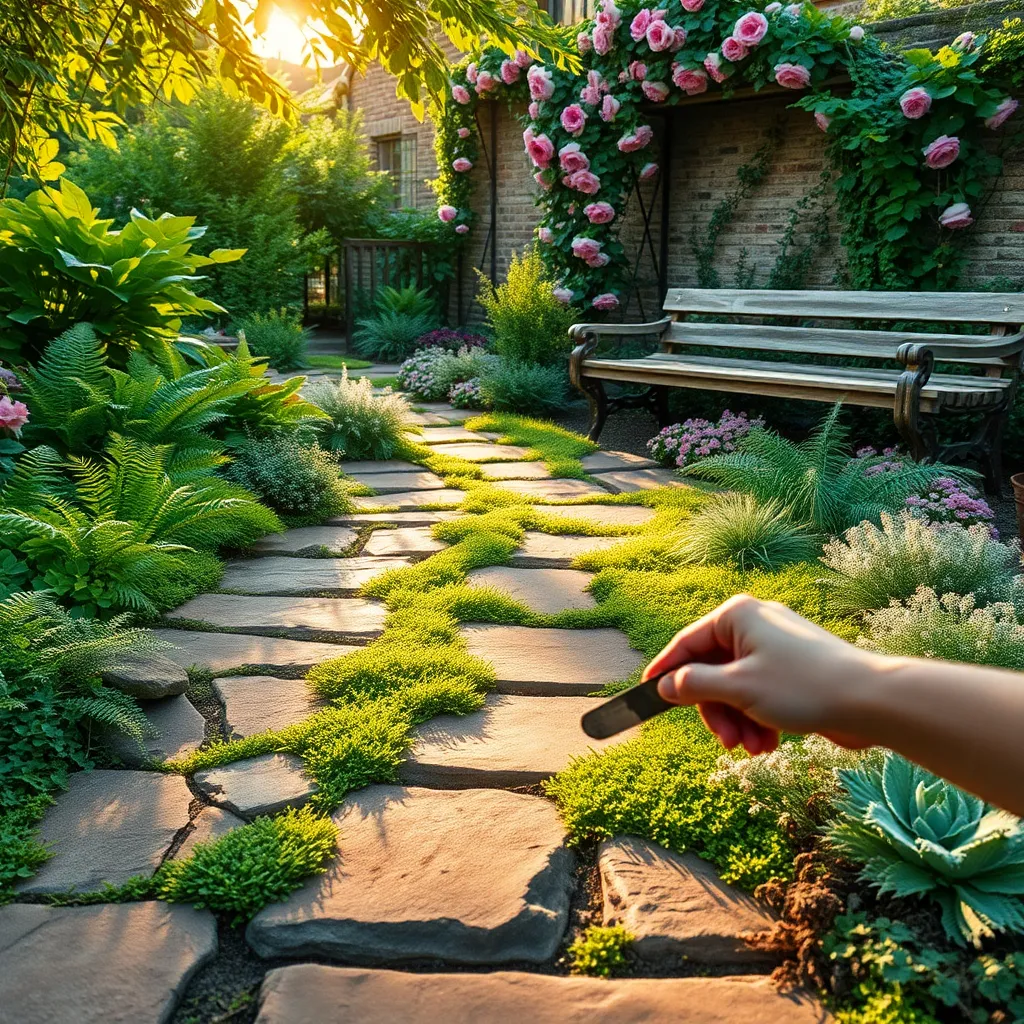
Maintaining your garden pathways is essential for ensuring their longevity and aesthetic appeal. Start by regularly sweeping debris and leaves off the path to prevent staining and moss growth, which can make surfaces slippery.
Consider applying a suitable sealant on stone or concrete paths to protect them from weather damage. Sealants help prevent water ingress, which can cause cracking during freeze-thaw cycles in colder climates.
Weeds are a common issue in garden pathways, but they can be controlled with proper techniques. Use a weed barrier fabric beneath your path materials, or regularly apply a natural herbicide to minimize their growth.
For those with gravel or loose material paths, rake periodically to redistribute the material evenly. This not only maintains appearance but also prevents the formation of ruts that can lead to water pooling and erosion.
Conclusion: Growing Success with These Plants
In exploring the ’12 Creative Garden Pathway Designs’, we uncovered an inspiring parallel to nurturing relationships: the path you choose can enhance the journey. From the stability of concrete to the fluidity of gravel, each pathway symbolizes a key relationship concept: communication, trust, balance, understanding, patience, creativity, support, growth, adaptability, shared goals, resilience, and love. These pathways remind us that relationships, much like gardens, thrive when we thoughtfully design our journey together.
As your actionable next step, choose one concept that resonates most with your current relationship and focus on nurturing it this week. Whether it’s enhancing communication or fostering creativity, taking deliberate action today can enrich your path forward.
Remember, relationships are a continuous journey, not a destination. Bookmark this article to revisit these concepts and reflect on your progress. Doing so will provide you with a roadmap to navigate and strengthen your relationships over time.
As you cultivate these pathways, embrace the vision of a flourishing relationship where both partners grow and thrive together. The seeds of effort you plant today will blossom into the success of tomorrow. Save this guide as your companion on this beautiful journey of connection and growth.

